Transuranic
Transuranic is a series of uranotypes, an obsolete nineteenth-century photographic process that uses uranium instead of silver to form the image. Uranium is an element that was used to make nuclear bombs and is the basic fuel for nuclear power reactors. These uranotypes were created from photographs captured at every nuclear site in the Western U.S. that transports radioactive waste to the Waste Isolation Pilot Plant (WIPP) in New Mexico. WIPP is the nation’s only permanent geological repository for radioactive waste, a place where waste is buried deep in the earth and intended to rest for 10,000 years.
Upon moving to New Mexico from Japan, where I participated in disaster relief work following the 2011 tsunami and nuclear meltdown, I set out to understand the impact of the nuclear industry on my immediate surroundings. Transuranic documents nuclear facilities from an outsider’s perspective. Places seemingly transparent in their operations, as indicated by signage, and resting amongst us like scars on the landscape. The red and yellow hue of the uranotypes, likened to the color of the sky after the bomb was dropped on Hiroshima, was formed from the exposure of uranyl nitrate. This material presence negates the unassuming and banal nature of these sites and reminds us of the reality reflected in the images.
Transuranic

Transuranic Installation View
13 Uranotypes (uranium prints)Installation View: 9"x13" Uranotype in locked box with 2 Geiger Counters, Sound
Cold War Era Geiger counter and post-Fukushima consumer Geiger counter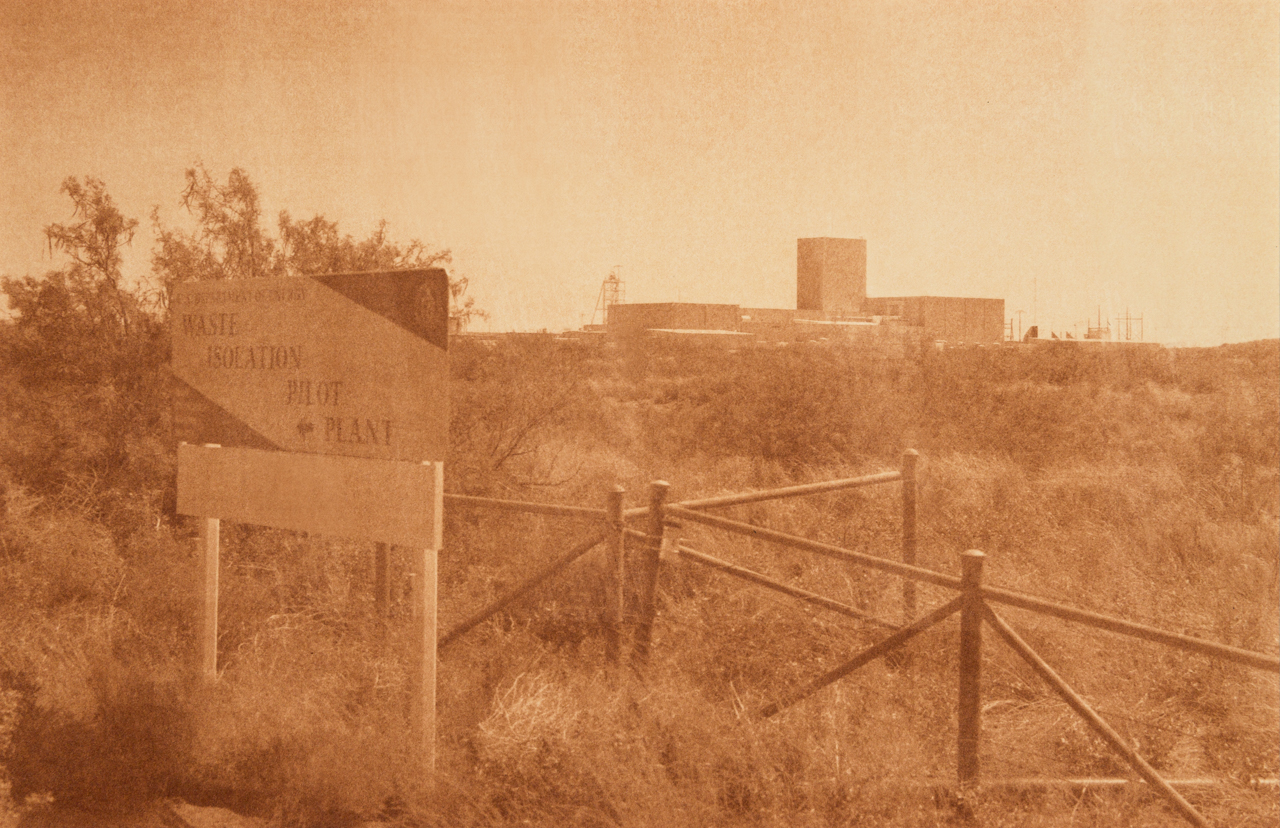
Waste Isolation Pilot Plant, Carlsbad New Mexico, 2014, 9"x13" Uranotype
The nation's only geological repository for radioactive waste.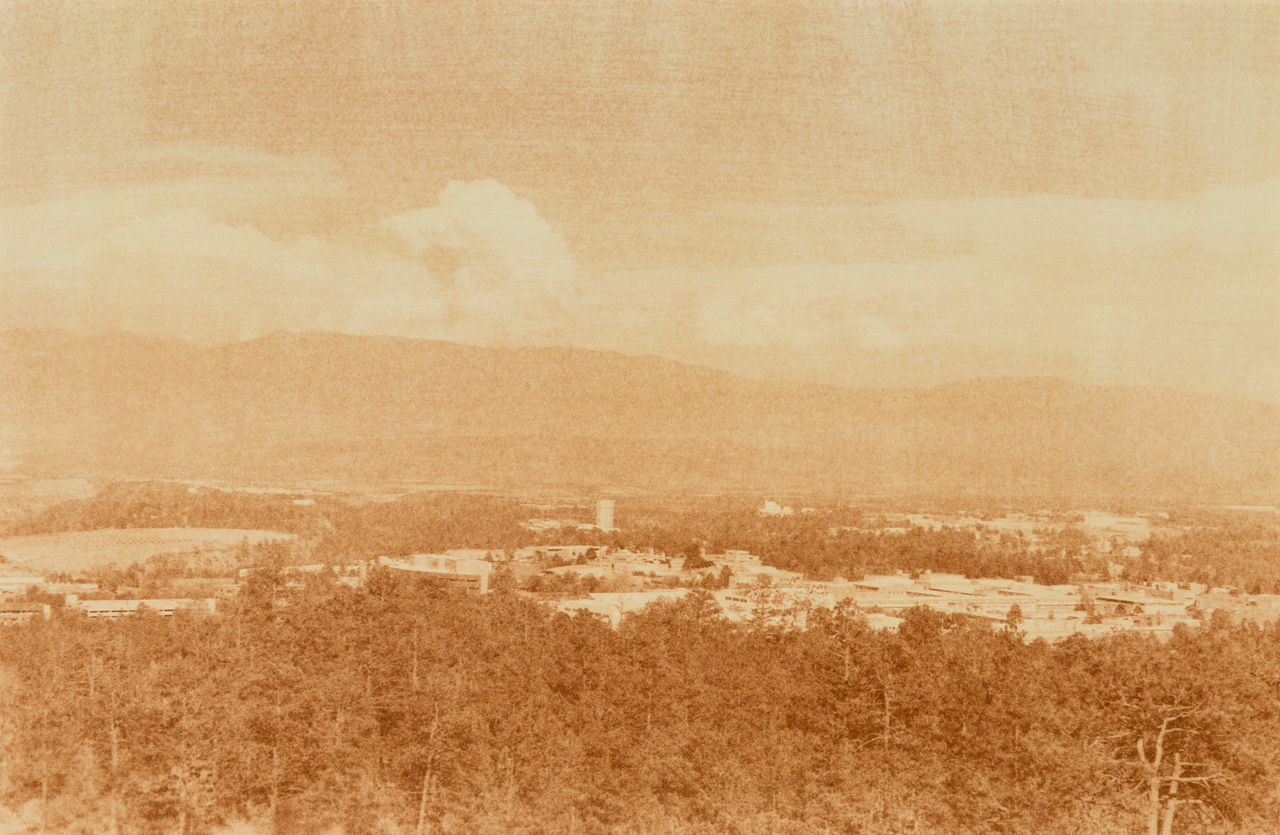
Los Alamos National Laboratory, New Mexico, 2014, 9"x13" Uranotype
Radioactive waste shipped to WIPP: 9,176.38 m3 (2,424,143 Gallons)
Idaho National Laboratory, Idaho Falls Idaho, 2014, 9"x13" Uranotype
Radioactive waste shipped to WIPP: 42,920.48 m3 (11,338,391 Gallons)
Columbia Generating Station, Hanford Washington, 2014, 9"x13" Uranotype
Radioactive waste shipped to WIPP: 5,060.79 m3 (1,336,919 Gallons)
Hanford Site, Hanford Washington, 2014, 9"x13" Uranotype
Radioactive waste shipped to WIPP: 5,060.79 m3 (1,336,919 Gallons)
Waste Isolation Pilot Plant, Carlsbad New Mexico, 2014, 9"x13" Uranotype
Amount of waste emplaced to date: 90,983.42 m3 (24,035,165 Gallons)
Urenco, Eunice, New Mexico, 2014, 9"x13" Uranotype
The only uranium enrichment plant in the U.S.
Rocky Flats Plant, Arvada Colorado, 2014, 9"x13" Uranotype
Radioactive waste shipped to WIPP: 15061.94 m3 (3,978,943 Gallons)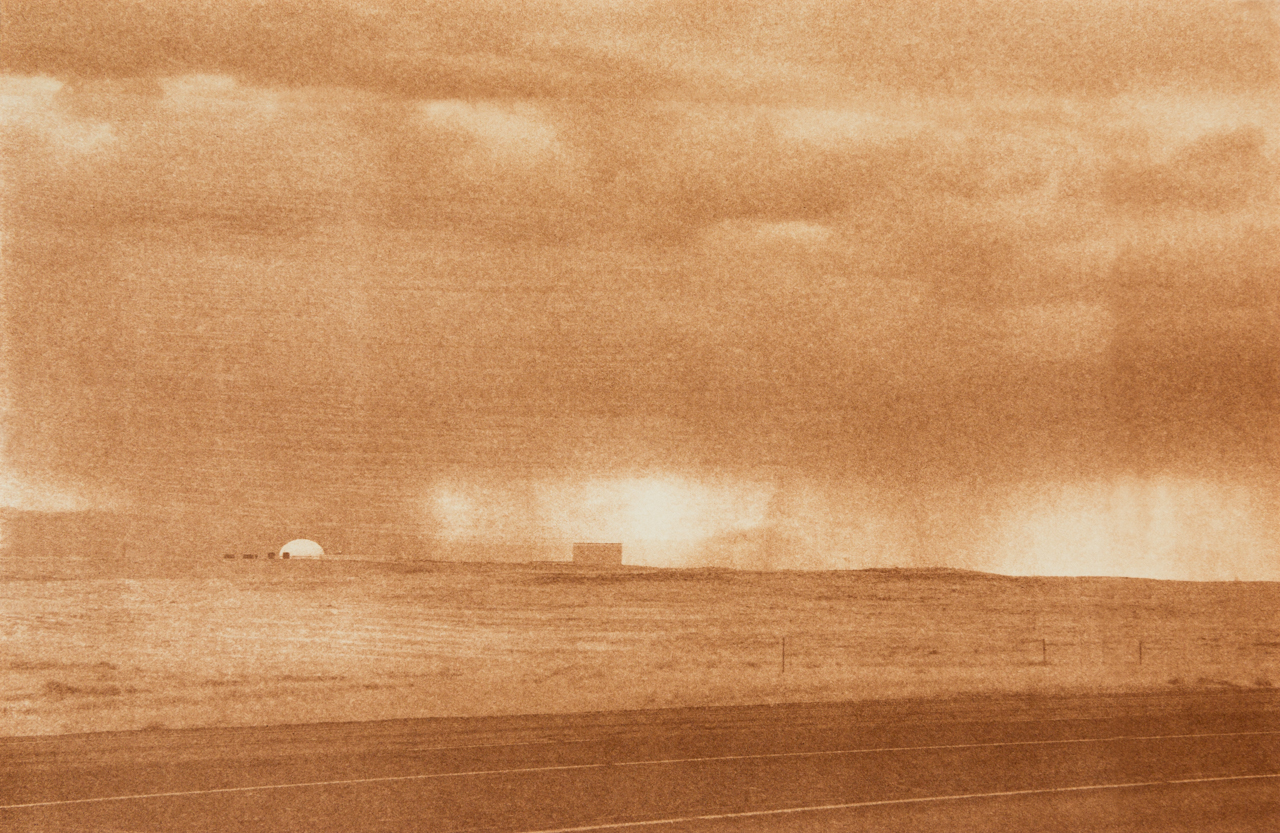
Hanford Site, Hanford Washington, 2014, 9"x13" Uranotype
Radioactive waste shipped to WIPP: 5,060.79 m3 (1,336,919 Gallons)
Nevada National Security Site, 65 miles northwest of Las Vegas, 2014, 9"x13" Uranotype
Radioactive waste shipped to WIPP: 405.37 m3 (107,087 Gallons)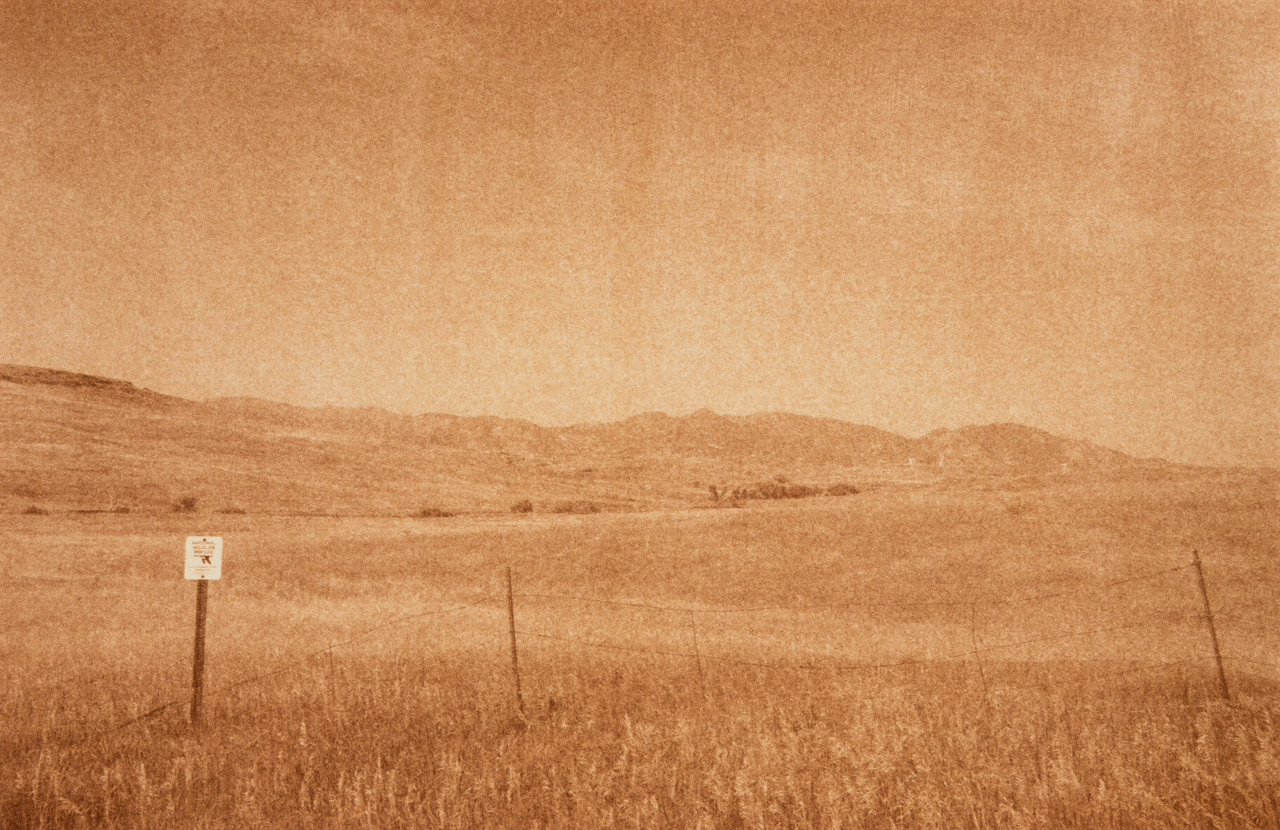
Rocky Flats Wildlife Refuge, Arvada Colorado, 2014, 9"x13" Uranotype
Radioactive waste shipped to WIPP: 15061.94 m3 (3,978,943 Gallons)
Waste Control Specialists, Andrews Texas, 2014, 9"x13" Uranotype
Temporarily accepting waste since WIPP’s closure in February, 2014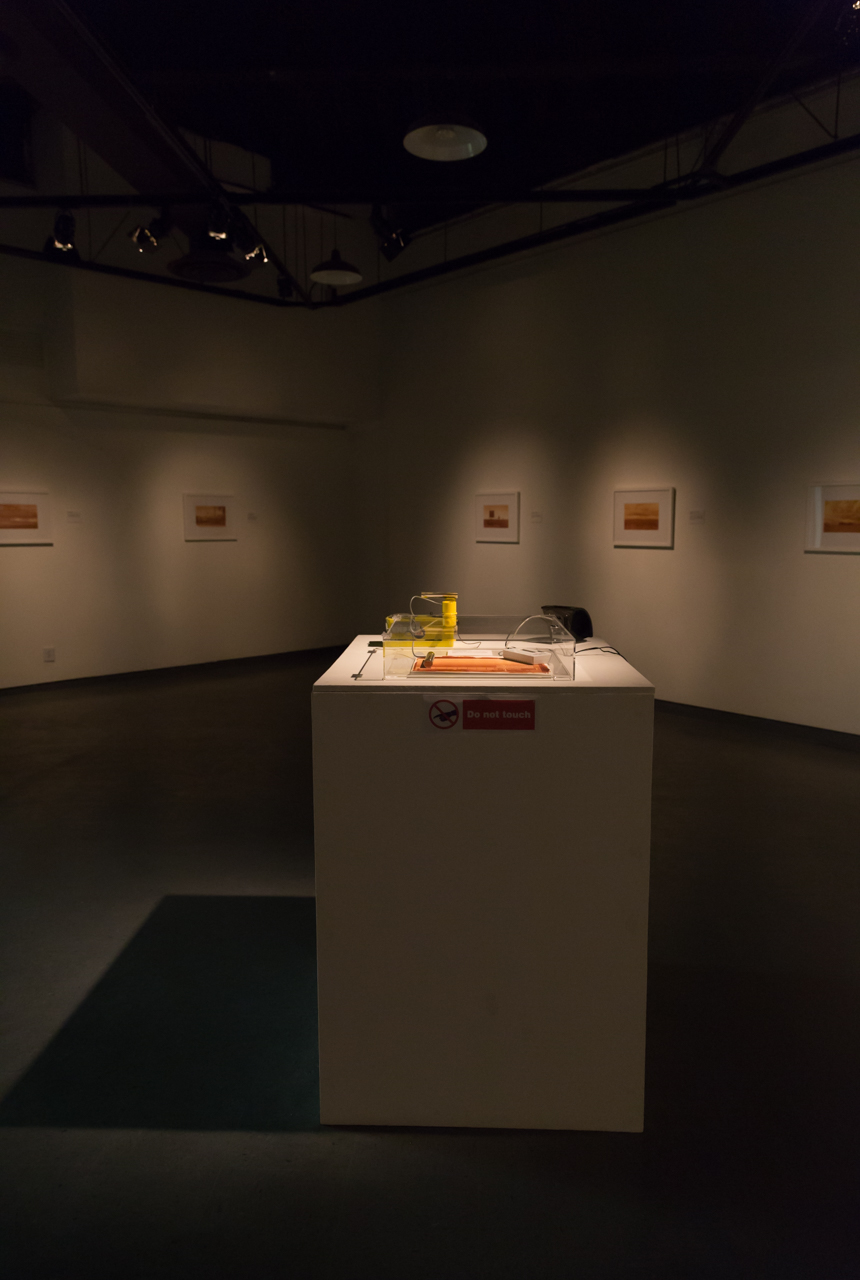
Transuranic Installation View
Pedestal with Geiger counters on Uranotype print, Sound
Transuranic Installation View
13 Uranotypes (uranium prints)
Transuranic Installation View
Cold War Era Geiger counter and post-Fukushima consumer Geiger counter, Sound
Transuranic Installation View
Cold War Era Geiger counter and post-Fukushima consumer Geiger counter, Sound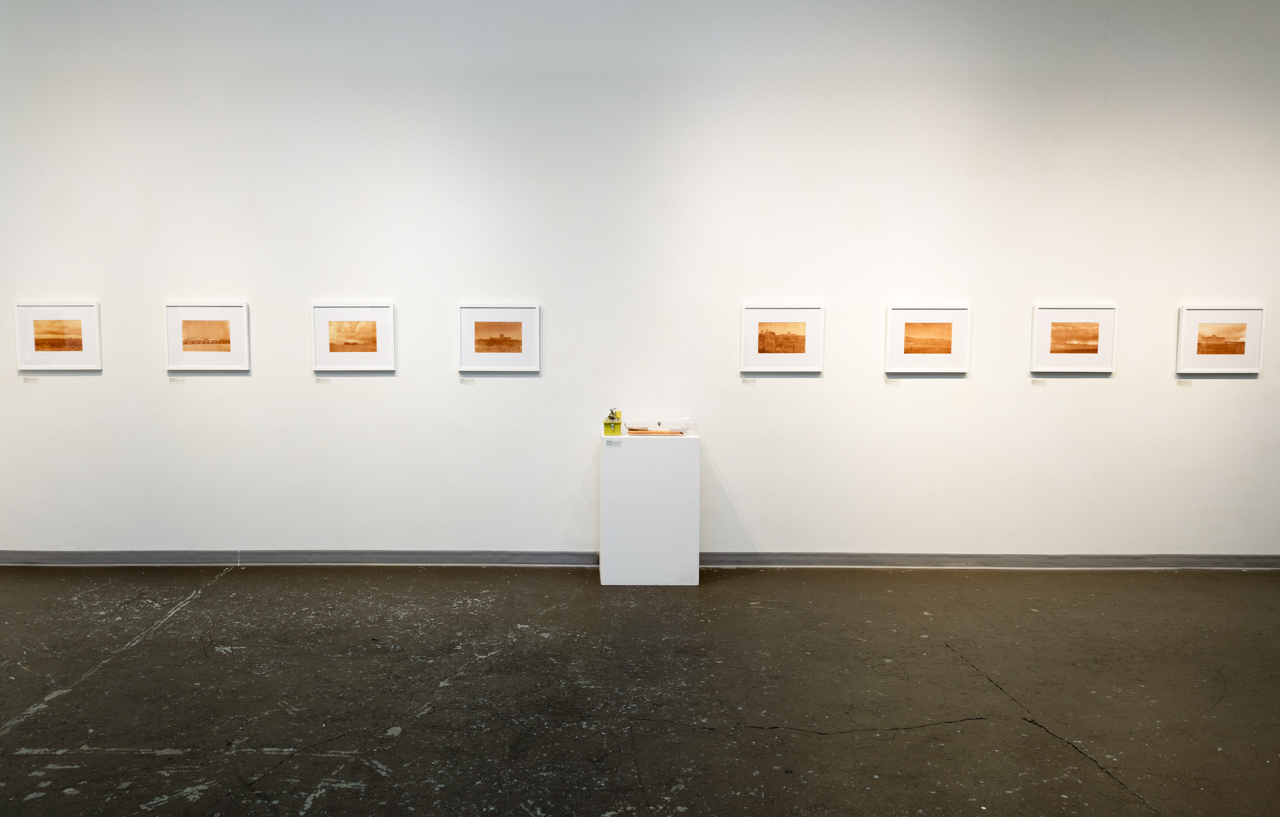
Installation Example from 3-Person Exhibition
Reactive Matters at Newspace Center for Photography, Portland, ORTransuranic is a series of uranotypes, an obsolete nineteenth-century photographic process that uses uranium instead of silver to form the image. Uranium is an element that was used to make nuclear bombs and is the basic fuel for nuclear power reactors. These uranotypes were created from photographs captured at every nuclear site in the Western U.S. that transports radioactive waste to the Waste Isolation Pilot Plant (WIPP) in New Mexico. WIPP is the nation’s only permanent geological repository for radioactive waste, a place where waste is buried deep in the earth and intended to rest for 10,000 years.
Upon moving to New Mexico from Japan, where I participated in disaster relief work following the 2011 tsunami and nuclear meltdown, I set out to understand the impact of the nuclear industry on my immediate surroundings. Transuranic documents nuclear facilities from an outsider’s perspective. Places seemingly transparent in their operations, as indicated by signage, and resting amongst us like scars on the landscape. The red and yellow hue of the uranotypes, likened to the color of the sky after the bomb was dropped on Hiroshima, was formed from the exposure of uranyl nitrate. This material presence negates the unassuming and banal nature of these sites and reminds us of the reality reflected in the images.